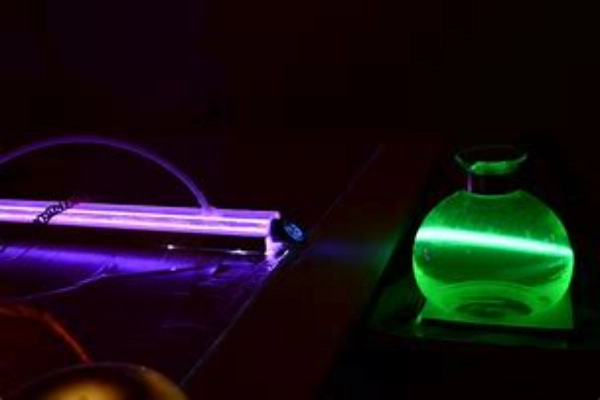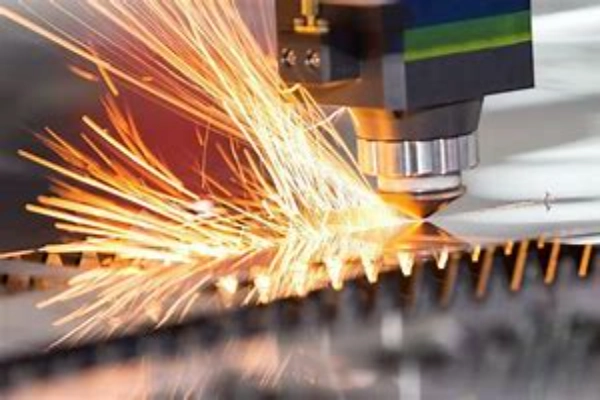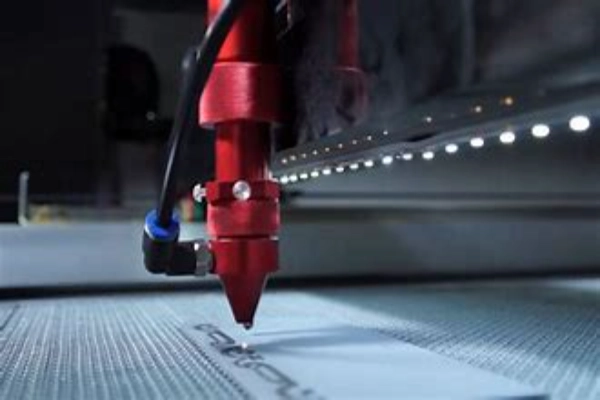Introduction
The laser industry has undergone significant advancements in recent decades, leading to the creation and utilization of unique materials. Among these, the CLBO crystal has emerged as a game-changer in the ultraviolet laser domain, expanding horizons for various applications and research. In this article, we delve deep into the nonlinear properties of CLBO crystals and how they’re reshaping the UV laser landscape.

Understanding the Nonlinear Properties of CLBO Crystal
Understanding the nuances of nonlinear optics, especially as it pertains to the CLBO crystal, is akin to unlocking the mysteries of the very fabric of light manipulation. At the heart of this is the principle that while most materials react in a predictable linear manner to light, others exhibit properties that change dynamically with the intensity of light, leading to exciting and innovative outcomes.
Nonlinear optics stands as a testament to the unpredictability of light’s interaction with certain materials. In the realm of linear optics, light behaves predictably. Shine it onto a surface, and it will react in a set, expected manner irrespective of its intensity. But the world of nonlinear optics, where the CLBO crystal reigns supreme, is where the real magic unfolds. Here, the optical properties of materials morph and change as the intensity of the light does. It’s almost as if the material and light are dancing together, each responding and adapting to the other’s moves.
Diving deeper, the Cesium Lithium Borate, or CLBO as it’s more commonly known, is a true marvel in this dance of light. Its crystalline structure and unique attributes make it a maestro of nonlinear optics. But what really sets it apart from its contemporaries is its unparalleled efficiency in facilitating third harmonic generation, a process pivotal for achieving the coveted 266nm lasers. While other materials might falter or not perform efficiently, the CLBO stands out, reliably setting the gold standard in the industry.
The third harmonic generation process is nothing short of mesmerizing. Imagine three individual photons, each carrying its own energy, coming together in a harmonious union to produce a single photon with triple the energy. This tripling effect is not just a theoretical fascination but has profound practical implications. With CLBO crystals at the helm, this process is harnessed to its fullest potential, allowing for the creation of 266nm lasers. These lasers, with their specific wavelength and energy, are pivotal for a wide range of applications, from medical procedures to intricate material processing.
In essence, the world of nonlinear optics and the prominence of the CLBO crystal within it is not just a testament to scientific advancement but also a glimpse into the future of light manipulation and its boundless possibilities.

Advantages of CLBO Crystals in Ultraviolet Lasers
The ultraviolet laser industry is constantly evolving, seeking materials that can offer both efficiency and adaptability. Enter the CLBO crystals, which have dramatically changed the game, providing solutions that were previously deemed challenging, if not impossible.
Take, for instance, the wide angular acceptance of CLBO crystals. In the world of laser technology, the angle at which a beam interacts with a medium can greatly influence the outcome. Many materials are finicky, only performing optimally at specific angles. However, with CLBO crystals, there’s a remarkable breadth in the angles of incidence they can handle. This means that instead of being constrained to narrow operational windows, scientists and technicians find themselves with a far greater playground. This flexibility is particularly critical in fields where precision is paramount. Whether it’s intricate medical procedures or advanced research experiments, the broad angular acceptance of CLBO ensures that professionals can adjust and adapt without constantly fearing significant efficiency losses.
But the prowess of CLBO crystals doesn’t stop at adaptability. In the demanding world of high-energy laser systems, the endurance and robustness of the operating material are as crucial as its performance. These systems, often used in cutting-edge research, industrial applications, or medical treatments, require materials that can take a punch, metaphorically speaking. They need to withstand high energies, repeated pulses, and intense usage without showing signs of wear and tear or efficiency degradation. CLBO crystals rise to this challenge admirably. Their intrinsic durability means they can handle the rigors of high-energy operations. When you’re dealing with applications where there’s little room for error, and every pulse counts, the reliability and robustness of CLBO become invaluable.
In sum, the advantages of CLBO crystals in ultraviolet lasers are manifold. From the flexibility offered by their wide angular acceptance to their unparalleled strength in high-energy environments, these crystals are rapidly becoming the cornerstone of advanced laser technology. As the industry continues to push the boundaries of what’s possible, materials like CLBO are ensuring that those boundaries are ever-expanding.

CLBO vs. Traditional Crystals: A Comparative Analysis
The rapid evolution of laser technology has instigated a critical evaluation of materials, pushing the industry to move beyond traditional crystals and explore more advanced options like the CLBO. Through a comparative lens, it becomes evident why CLBO crystals are not just a mere alternative but indeed a superior choice.
One of the initial hurdles faced by traditional crystals is their limited lifespan, particularly when subjected to the harsh conditions of intense ultraviolet exposure. Over time, these crystals tend to degrade, reducing their efficiency and overall performance. This degradation not only means more frequent replacements but also poses potential risks in precision-demanding applications where consistent output is essential. Contrast this with CLBO crystals, which boast of an impressive resistance to UV-induced wear and tear. Their resilience ensures that they remain operationally effective for much longer periods, reducing maintenance concerns and ensuring consistent results over extended periods.
Another area where CLBO outshines its predecessors is in phase matching. In the realm of nonlinear optics, phase matching is crucial as it ensures that all interacting waves amplify in unison, optimizing the energy conversion processes. Traditional crystals often have limitations in achieving perfect phase matching, leading to suboptimal outcomes and wasted energy. CLBO crystals, however, have been engineered with enhanced phase-matching capabilities. This intrinsic quality allows them to provide maximum energy output for the energy they receive, ensuring that systems operate at peak efficiency and deliver the best possible results.
Lastly, as technological applications grow more complex and demanding, the stability of a material, especially under varying thermal conditions, becomes a pivotal concern. Fluctuations in temperature can wreak havoc on optical processes, causing inconsistencies in output and even risking damage. Traditional crystals, while capable to an extent, often struggle with extreme temperature variations. CLBO crystals, in stark contrast, are renowned for their exceptional thermal stability. They remain unfazed, whether it’s under intense heat or chilling cold, delivering a uniform performance irrespective of the ambient conditions.
In essence, while traditional crystals have served their purpose and laid the groundwork, the future clearly belongs to materials like CLBO. With their enhanced durability, unmatched phase-matching prowess, and unparalleled thermal stability, they are well poised to drive the next wave of innovations in laser technology.

Applications Leveraging CLBO’s Potential
The intrinsic properties of CLBO crystals, both in terms of resilience and performance, have carved out a unique niche for them across various sectors. Their transformative potential is becoming increasingly evident, as industries, research institutions, and medical establishments recognize and leverage their unparalleled capabilities.
In the realm of medical diagnostics, the promise of CLBO crystals shines brightly. Traditional imaging techniques sometimes grapple with clarity and depth, especially when peering into the deeper layers of human tissue. The superior efficiency with which CLBO crystals generate UV lasers has revolutionized this space. UV lasers, with their distinct wavelength, can penetrate tissues more deeply and with greater clarity than many other light sources. This penetration allows for clearer, more detailed imagery, making diagnoses more accurate and timely. Whether it’s spotting minute tumors or detecting vascular anomalies, the precision afforded by CLBO crystals is reshaping medical diagnostic procedures.
Material processing, a domain where accuracy and efficiency are paramount, has also witnessed a sea change with the introduction of CLBO crystals. Traditional methods sometimes fall short, especially when working on intricate tasks or with materials that require delicate handling. Given CLBO’s exceptional attributes, particularly its ability to withstand high energies, lasers derived from these crystals can execute delicate cuts, etchings, or modifications without damaging the surrounding material. Such precision is indispensable in industries like electronics, where minute components need precise processing, or in art and design, where intricate detailing can make all the difference.
But perhaps, the most profound impact of CLBO crystals can be seen in the field of research and development. The ever-curious scientific community, always in pursuit of the next big discovery, requires tools that are both robust and versatile. CLBO crystals, with their wide angular acceptance, ensure that experimental setups can be more varied and flexible. Meanwhile, their thermal stability guarantees that experiments remain unaffected by fluctuating ambient conditions. This combination empowers researchers to explore uncharted territories, be it in physics, chemistry, or any interdisciplinary field, armed with technology that won’t falter or limit their potential.
To encapsulate, CLBO crystals are not just another material; they represent a paradigm shift in how we harness light and manipulate it for varied applications. From medical advancements to industrial innovations and pioneering research, CLBO’s potential is only beginning to be fully realized.

Conclusion
The CLBO crystal is undoubtedly revolutionizing the ultraviolet laser landscape. Its unique nonlinear properties, coupled with durability and efficiency, make it an unmatched asset in the optics world. As technology continues to evolve, CLBO’s significance will only magnify, establishing it as the bedrock of future ultraviolet laser innovations.
FAQs
- What makes CLBO crystals stand out in third harmonic generation?
- CLBO crystals have unique nonlinear properties that facilitate efficient third harmonic generation, making them ideal for producing 266nm lasers.
- How do CLBO crystals enhance flexibility in laser systems?
- Due to their wide angular acceptance, CLBO crystals allow for a broader range of angles without significant drops in efficiency.
- Are CLBO crystals more durable than traditional ones?
- Yes, CLBO crystals showcase exceptional resistance, especially under UV exposure, ensuring a prolonged operational lifespan.
- Why is phase matching important in nonlinear optics?
- Phase matching optimizes the efficiency of nonlinear processes, ensuring maximum output for the input energy provided.
- In which sectors is the application of CLBO crystals growing rapidly?
- Medical diagnostics, material processing, and research and development are some of the sectors leveraging CLBO crystals’ potential to the fullest.

Frank
Frank graduated from the University of Shanghai for Science and Technology, majoring in optics. As a technical engineer at Crylink Company, he deeply understands crystal materials and laser components.
Related Video(s) with this Article
Related Product(s) with this Article
Related Application(s) with this Article
